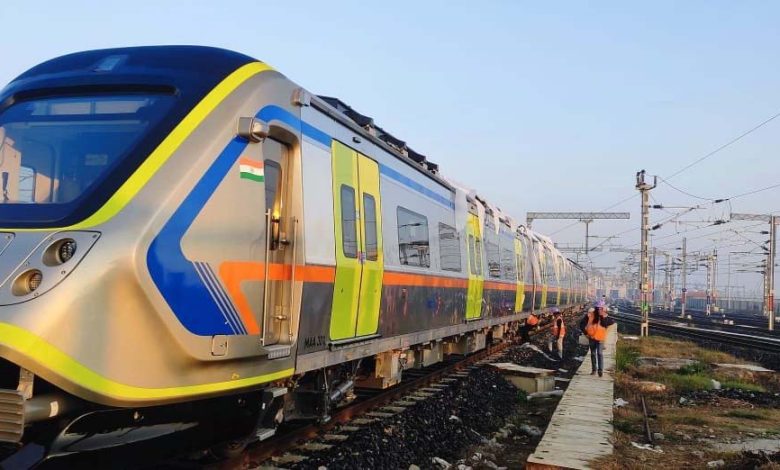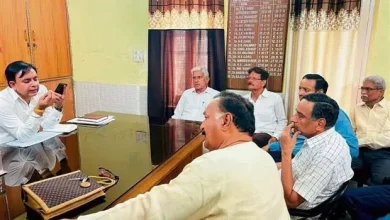Meerut Metro’s first trainset reaches Duhai NCRTC depot

Ghaziabad: The first trainset of Meerut Metro reached NCRTC depot in Duhai on Tuesday night. The train set of three coaches of Meerut Metro has been brought from Savli, Gujarat. Now, it is being prepared for assembling and testing. NCRTC Managing Director Vinay Kumar Singh had recently unveiled the first look of the Meerut Metro trainset. After this, Alstom handed over the first trainset to NCRTC in Savli, Gujarat. This is the first train which has reached the depot for Meerut Metro.
This trainset has been designed and manufactured in India under ‘Make in India’. Equipped with state-of-the-art technologies, the maximum speed of Meerut Metro train is 120 km per hour. Meerut Metro is going to introduce a safe, fast and modern means of transportation for the residents of Meerut, Uttar Pradesh. With the arrival of the trainset, the trial run of Meerut Metro will be started soon. Meerut Metro line is 23 km long with 13 stations. Currently, the construction of Meerut Metro is going on at a fast pace. All its stations are taking shape. This is the first time in the country that Namo Bharat Train and Meerut Metro will run on the same infrastructure as Delhi-Ghaziabad-Meerut RRTS.
For this, NCRTC, in a pioneering effort in global rail transport, has adopted European Train Control System (ETCS) Level 2 signaling system with Hybrid Level-3 over Long Term Evolution (LTE).
It will provide the best facilities and services to the public by seamlessly integrating RRTS and Metro services within Meerut. The trains are air-conditioned, equipped with comfortable seating arrangements, luggage racks, grab handles, USB device charging facility and many other amenities required by the new age traveller. Meerut Metro will consist of three-car (three coaches). More than 700 passengers will be able to travel in one train. Meerut Metro trains are made of state-of-the-art light weight and stainless steel. It also has CCTV cameras, dynamic route maps, infotainment system, automatic lighting.





